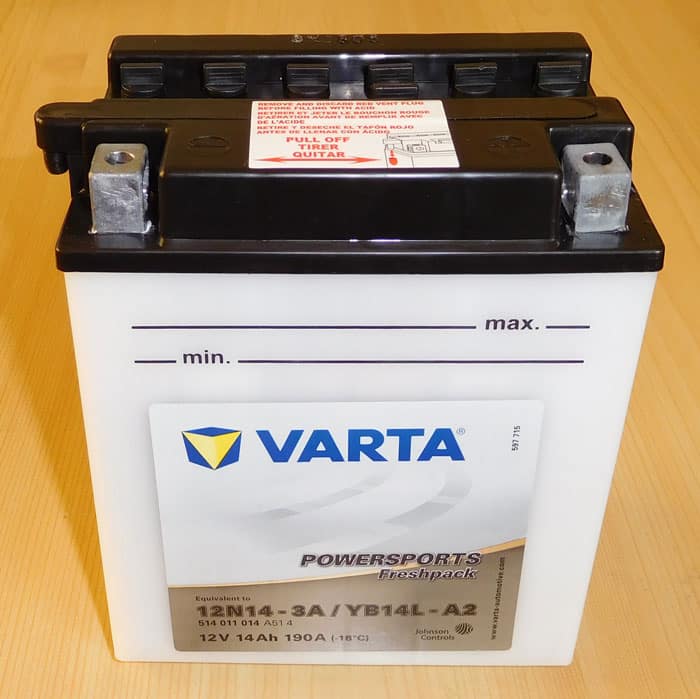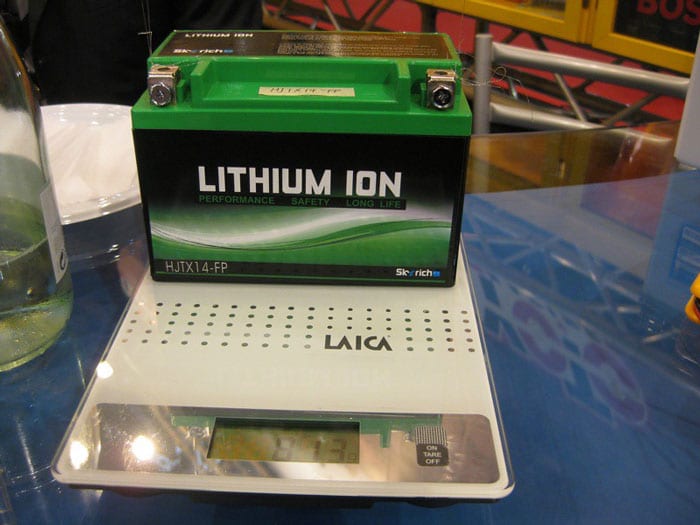Lithium Vs Lead Acid Motorcycle Battery: Which Is Good?

It’s easy to get stuck between lead-acid and lithium batteries if you don’t know much about motorcycle batteries.
For starters, the lead-acid batteries are the traditional, conventional batteries that have been around for many years. These batteries still enjoy extensive usage today. The lithium-ion batteries represent the recent upgrades in motorcycle battery technology that changes how batteries work.
Before you decide on which of the two batteries to buy for your motorcycle, read out expert guide below on everything you need to know about the two batteries, including their strengths and weaknesses.
Table of Contents
Lithium Vs Lead Acid Motorcycle Battery—What You Need To Know
If you go shopping for the perfect motorcycle battery for your bike, you’ll notice that the above two batteries are the most common on the market. Looking at various motorcycle battery reviews will further confirm the fact that most of the riders usually end up choosing the traditional lead-acid or lithium battery.
Which battery to get for your bike will depend on a variety of factors. Below, we’ll provide you with critical information regarding each battery to help you make a more informed decision.
Lead Acid Battery
Also referred to as wet cell or flooded batteries, lead-acid batteries are the traditional batteries used to fire up motorcycle engines. A typical conventional battery used diluted sulfuric acid and water. When you try powering your motorcycle engine using this battery, the sulfur inside reacts with a coating applied to series of vertically stacked lead-alloy plates, thus the name lead-acid battery.

With time, the battery manufacturers have tried to eliminate the maintenance need for these batteries, as well as the spilling associated with the acid and water inside these traditional batteries.
This has led to the development of valve-regulated Lead-Acid (VRLA) or Gel batteries…
Gel/sealed batteries
These batteries utilize upgraded technologies that make them eliminate the need to service them. Plus, they come sealed, so you won’t have to worry about them tipping and the electrolyte inside spilling.
These batteries usually come at a higher cost than the flooded batteries.
AGM batteries
Still at it, the manufacturers have also come with AGM (Absorbed Glass mat) batteries. These usually come with fiberglass mats permanently soaked in the electrolyte.
These batteries can further be divided into models that come with the mats laid flat, just like the lead plates inside a flooded battery or spiral AGM batteries, where the mats come rolled and placed into cells.
The AGM batteries also tend to handle higher charge/discharge rates. They also excellently handle high temperatures and work best with slow and deep discharge.
Pros
Cons
Lithium-Ion Battery
As we mentioned earlier, the lithium-ion batteries represent the technological advancements in the world of motorcycle batteries.
The newer technology promises increased power and reliability for riders.
Despite being released many years after the lead-acid models, these batteries have become highly popular. One of the key reason why they’re so much popular is due to their lightweight and compact design.



A typical motorcycle lithium-ion battery has an entirely different chemical reaction compared to what we have seen in the lead-acid batteries above. They use lithium, the lightest of all metals. Inside, you’ll find a different electrolyte—lithium salt in a solution that’s not water.
It’s also worth noting that the lithium-ion batteries tend to be energy-dense compared to the lead-acid batteries. You’ll find a typical lithium battery offering you much higher CCA (cold cranking amps), lower self-discharge rate, quicker charging, and an extended lifespan.
Keep in mind that these batteries are charged by specific chargers intended for the lithium batteries. These chargers usually cost as much as the lithium battery itself, further making these batteries more expensive than lead-acid models.
Pros:
Cons:
Lithium vs Lead Acid Motorcycle Batteries—The Key Takeaways:
Now that we have outlined all the important details you need to know about these two batteries, here are the key points we can draw from this discussion:
Depth of discharge
This refers to the percentage of a battery’s total capacity that you can safely drain from it without damaging it.
A lithium battery lets you use up to 85% or more of its total capacity in a single cycle. This is unlike a lead-acid battery that shouldn’t be discharged past around 50% as this can affect its lifespan.
Efficiency
The efficiency rate of lead acid batteries is a bit lower than that of lithium batteries. To be more specific, lithium batteries are rated around 95% efficient, meaning up to 95% of the energy stored inside them is usable.
Lead acid models, on the other hand, are rated between 80 and 85%. Though a slight difference, higher efficiency in the lithium batteries means they have higher battery capacity.
Lifespan
Generally, all batteries degrade over time. The act of discharging the battery to power your bike engine and then recharging it makes one cycle.
With that said, lithium batteries deliver more times the number of cycles than lead acid batteries—translating to a longer lifespan.
Cost
The lead acid batteries are more affordable than lithium-ion batteries. They have lower purchase as well as installation costs. You’ll be surprised to note that a typical lead-acid model costs hundreds of bucks less than a lithium-ion model with the same size.
The differences in cost usually boil down to the fact that the cost of production of lithium batteries is way higher than that of lead-acid models.
Nonetheless, the longer lifespan of the lithium-ion batteries compared to lead acid batteries tends to even the scale.
Final words
Both lithium and lead acid motorcycle batteries are quite common among motorcycle riders. Both of them can reliably power your motorcycle engine, so they find wide usage among riders.
However, the two batteries have significant differences, with the lead-acid batteries representing the old and the lithium ones representing the new in motorcycle batteries.
Study the strengths and weaknesses of each of these batteries to help you make a more informed decision on which one to buy for your bike.
